M9.8 solar flare erupts from geoeffective Region 3500, Earth-directed CME likely
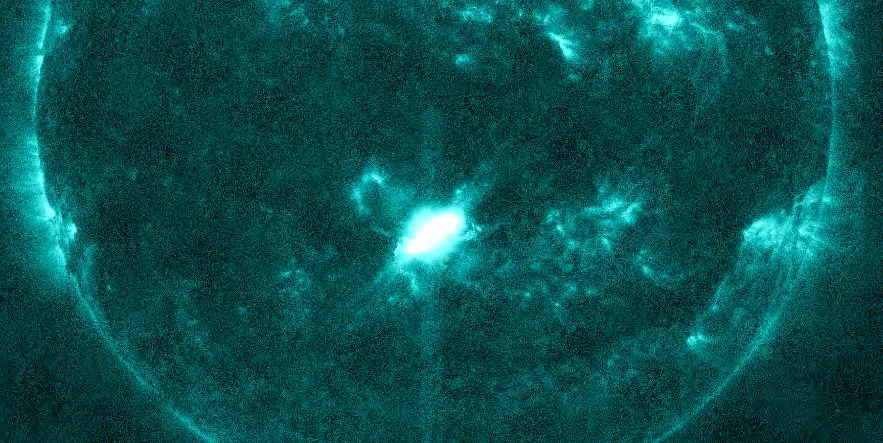
A very strong solar flare measuring M9.8 erupted from Active Region 3500 at 19:50 UTC on November 28, 2023. The event started at 19:35 UTC and ended at 20:09 UTC. Earth-directed CME is very likely.
- This could be the 4th and the strongest CME expected to impact Earth over the next couple of days.
- A G2 – Moderate Geomagnetic Storm Watch is in effect for December 1.
A Type II Radio Emission with an estimated velocity of 854 km/s was detected beginning at 19:59 UTC. Type II emissions occur in association with eruptions on the Sun and typically indicate a coronal mass ejection (CME) is associated with a flare event.
Additionally, a 10cm Radio Burst (Tenflare) with a peak flux of 720 sfu, was associated with the flare event. A 10cm radio burst indicates that the electromagnetic burst associated with a solar flare at the 10cm wavelength was double or greater than the initial 10cm radio background. This can be indicative of significant radio noise in association with a solar flare. This noise is generally short-lived but can cause interference for sensitive receivers including radar, GPS, and satellite communications.
Region 3500 is located at the center of the solar disk, making Earth-directed CMEs very likely.
Radio frequencies were forecast to be most degraded over SW USA, Central America, W South America and the Pacific Ocean at the time of the flare.
A full halo CME can be seen in NASA C2 coronagraph imagery at 20:12 UTC, SWPC forecasters said at 00:30 UTC on November 29. “Analysis and modeling of this event is ongoing as of the time of this writing, but an Earth-directed trajectory is likely.”
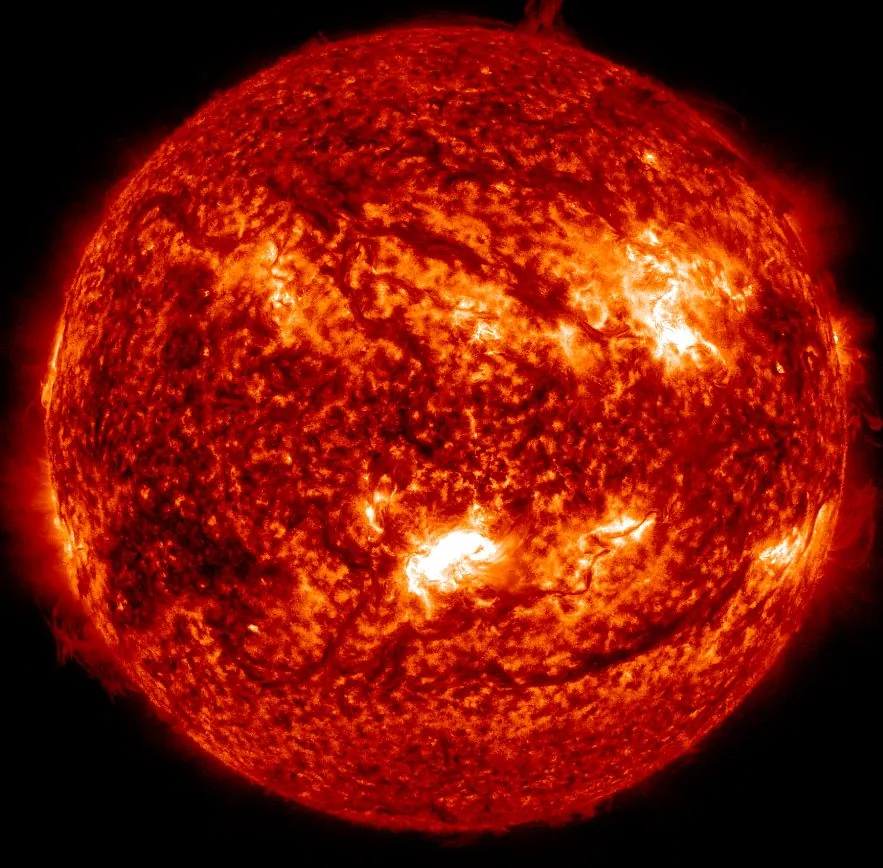
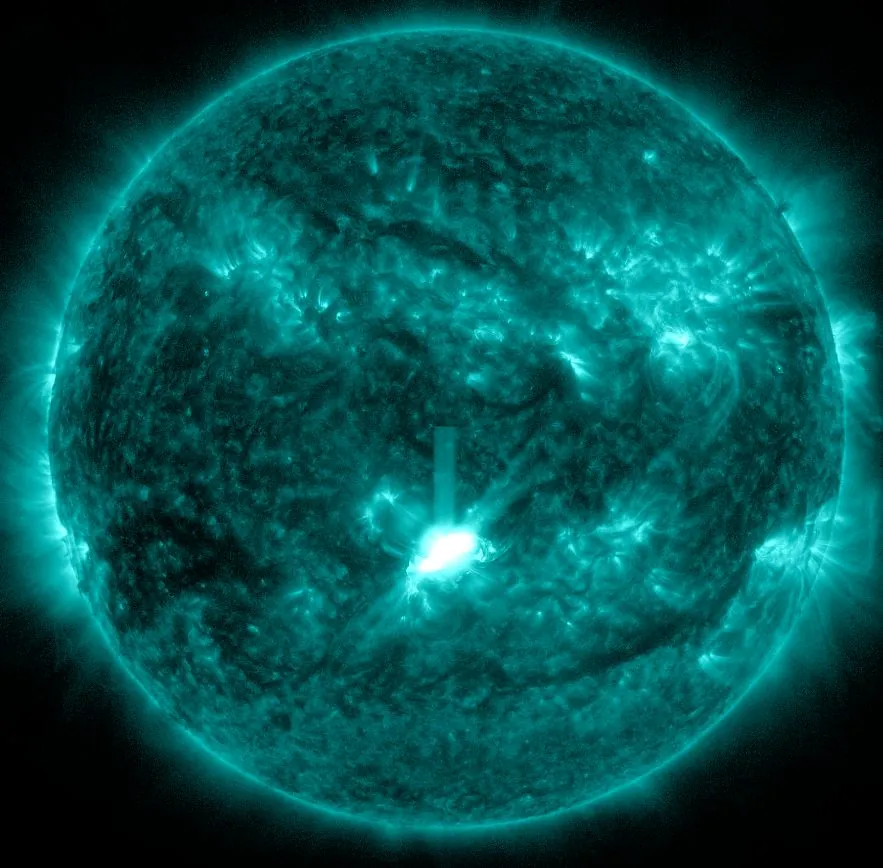
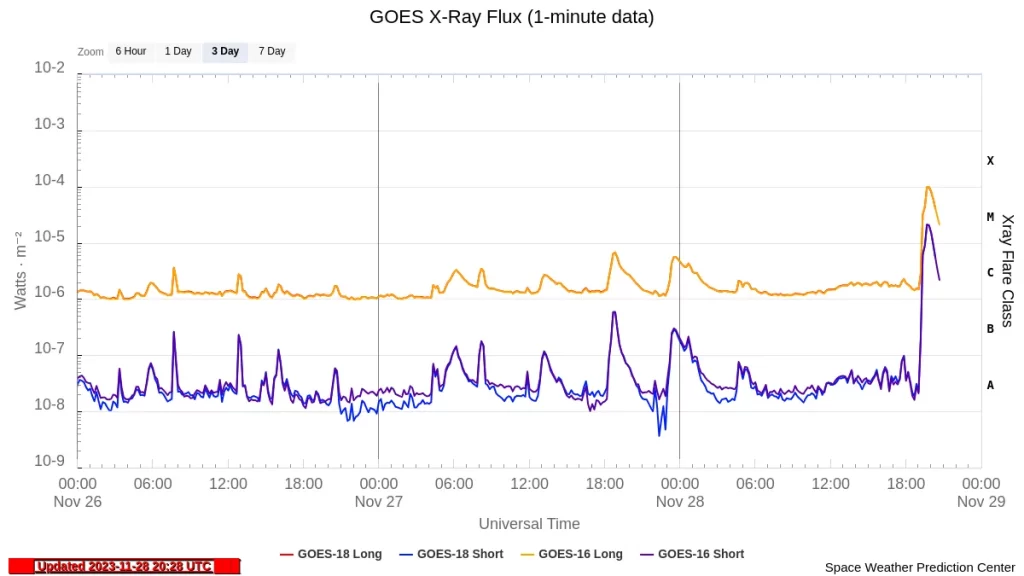
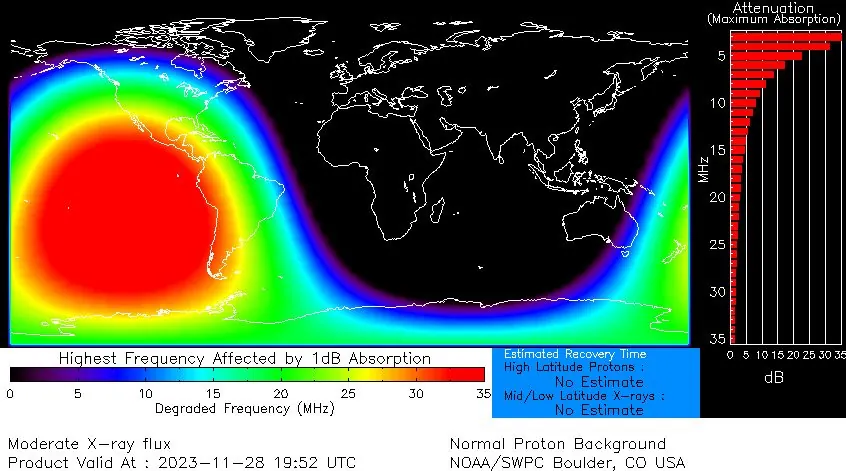
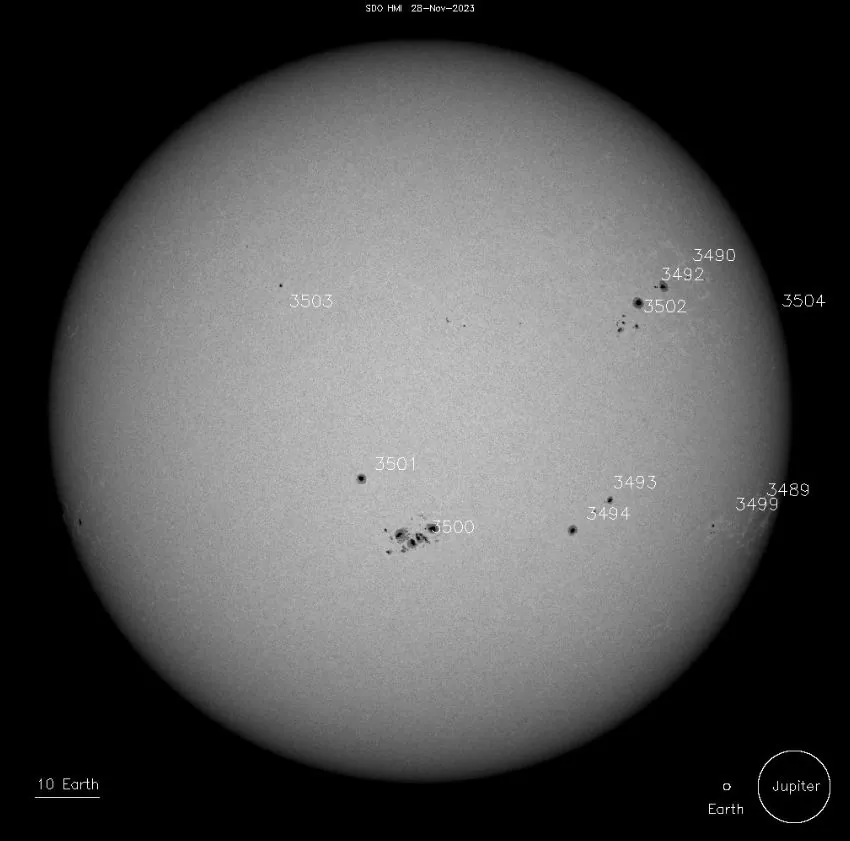
Multiple CMEs were produced on November 27, with three of these appearing to have Earth-directed components.
The first arrival is a potential glancing blow or near-Earth proximity passage beginning early November 30 (UTC).
The later CMEs are anticipated to arrive at Earth early December 1 (UTC) as at least glancing blows.
As a result, SWPC issued a G2 – Moderate Geomagnetic Storm Watch for December 1.
Potential impacts: The area of impact is primarily poleward of 55 degrees Geomagnetic Latitude.
- Induced currents – Power grid fluctuations can occur. High-latitude power systems may experience voltage alarms.
- Spacecraft – Satellite orientation irregularities may occur; increased drag on low Earth-orbit satellites is possible.
- Radio – HF (high frequency) radio propagation can fade at higher latitudes.
- Aurora – Aurora may be seen as low as New York to Wisconsin to Washington state.
Featured image credit: NASA SDO/AIA 131, Helioviewer, The Watchers

I for see this world is coming close to the end of time.